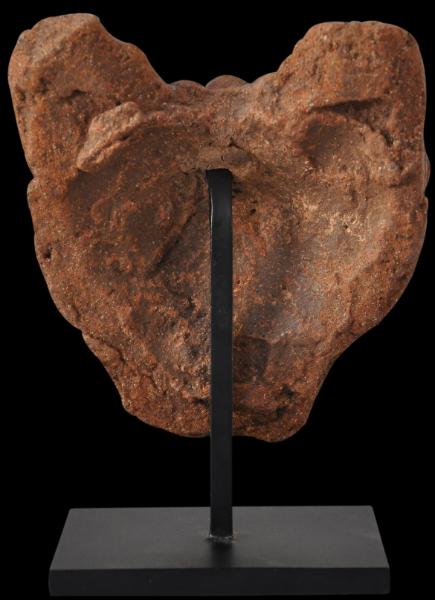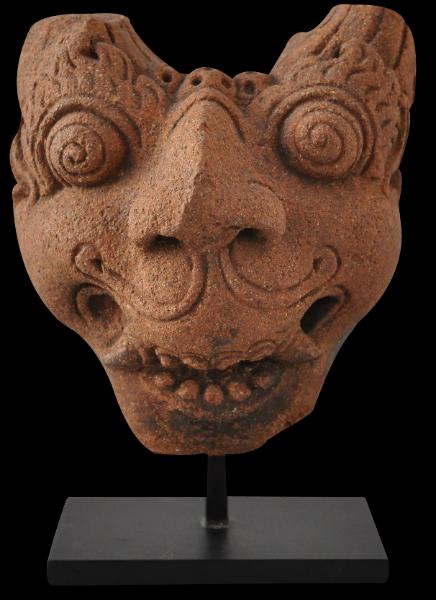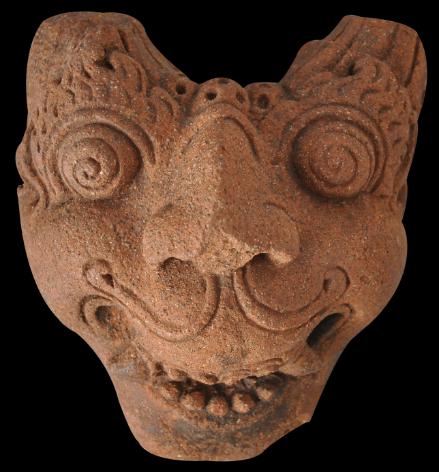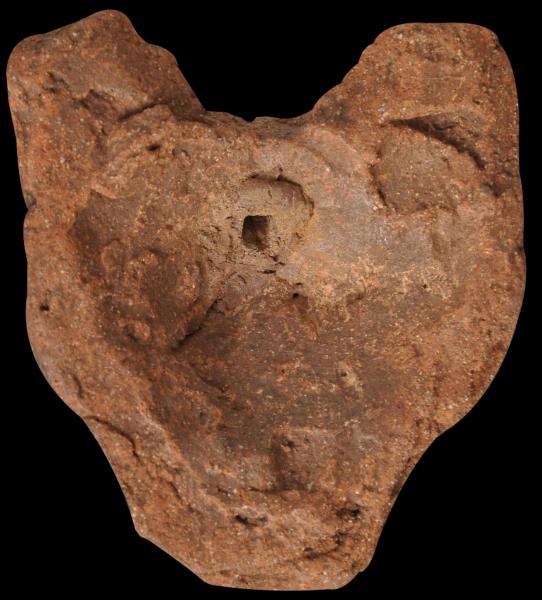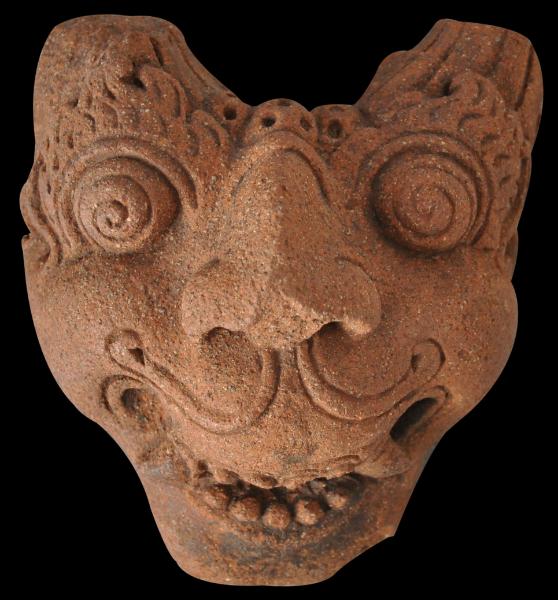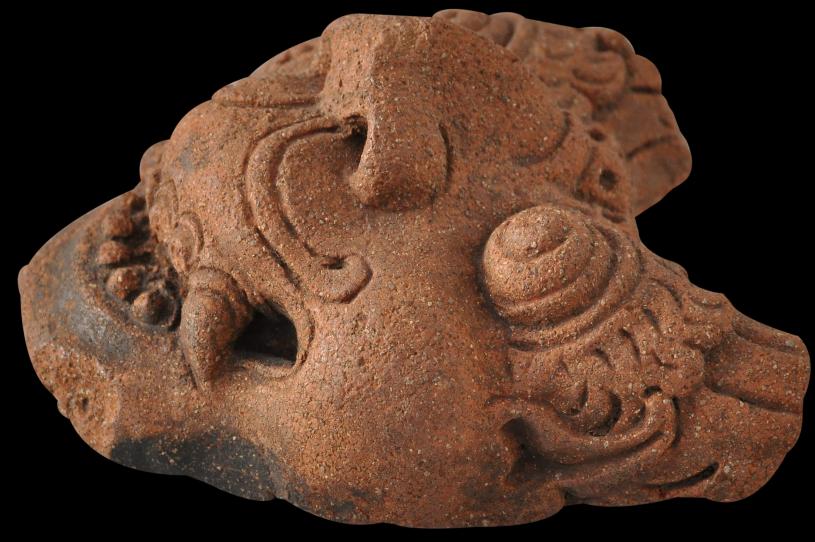
Kediri Kingdom Lion Face, Java
Terracotta Lion Mask Architectural Element
East Java
Kediri Period,10th-11th century
height (without stand): 14cm, width: 11.5cm, height with stand: 15.5cm, weight: 525g
This ostensibly demonic head, made from red terracotta, is of a kala mask, based on a lion’s head. In Indonesia, kala masks came to serve the same function and have the same meaning as the kirtimukha motif in India in that they had a protective and benevolent purpose and were affixed to temples and other public buildings, often over doorways.
The mask has a wide, prominent nose, an open mouth with prominent teeth and fangs, bulging eyes, extravagant eyebrows and a sweeping moustouche/whiskers.
It has a very strong presence and clearly is very decorative. The features are sharp. It has a custom-made stand.
Kediri was a Hindu Javanese kingdom based in East Java around the eleventh century. The kingdom was made possible due to ongoing attacks against the Srivijaya kingdom by the Chola rulers from South India. These attacks weakened the Srivijaya ruler’s grip and allowed regional kingdoms to be established.
Provenance
From a UK private collection; collected in Indonesia in the early 1970s.
References
Pal, P., Art from Sri Lanka & Southeast Asia: Asian Art at the Norton Simon Museum, Yale University Press, 2004.
Inventory no.: 1468
SOLD

